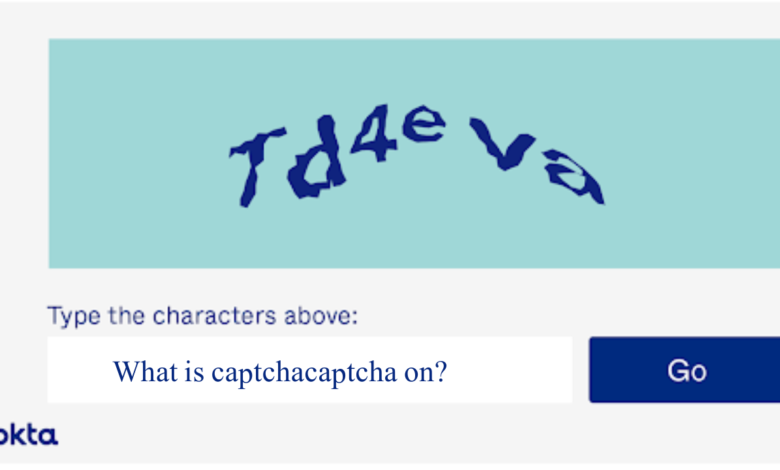What is captchacaptcha on?

Captchacaptcha on is a tool used on the internet to tell humans and computers apart. It stands for “Completely Automated Public Turing test to tell Computers and Humans Apart.” This tool often appears as a challenge on websites to make sure that a real person, not a robot, is accessing a service. Captchacaptcha on works by showing tasks that are easy for humans but hard for computers, such as identifying objects in a picture or typing distorted text. This helps protect websites from spam and cyber-attacks.
How does captchacaptcha on work?
Captchacaptcha on works by presenting challenges that require human intelligence to solve. One common example is asking users to recognize letters or numbers from a distorted image. This process is difficult for bots because it requires a certain level of perception and understanding. Another version of captchacaptcha on involves selecting pictures that contain a specific object, like choosing all the images with cars or traffic lights. Humans can easily identify these, but it’s much harder for automated programs, or bots, to make the same distinctions.
Why is captchacaptcha on important for websites?
Captchacaptcha on is important for websites because it helps keep them secure. Bots, which are automated programs, can try to attack websites by sending spam, stealing data, or flooding them with traffic. This can lead to slow performance or even a complete shutdown of a website. Captchacaptcha on helps block bots from doing these harmful activities by making sure that the user is a real person. Without captchacaptcha on, websites would be more vulnerable to these attacks, putting both the site and the users at risk.
What are the different types of captchacaptcha on?
There are several types of captchacaptcha on used on websites. The first is text-based, where users are asked to type a series of distorted letters or numbers. Another type is image-based, which asks users to select specific images from a grid that contain objects like cars, buses, or storefronts. There are also audio captchacaptcha on versions for users who have trouble with the visual challenges. A more modern type is the checkbox that simply asks users to check a box to prove they’re not a robot. This type uses background data to figure out if the user is human before they click.
How does captchacaptcha on benefit both users and website owners?
Captchacaptcha on offers benefits to both users and website owners by improving security and preventing unwanted actions from bots. For users, captchacaptcha on ensures that their personal information stays protected. It blocks bots from accessing private accounts or stealing information. For website owners, captchacaptcha on reduces spam and prevents malicious attacks that can damage the website. This means the site can run smoothly, keeping visitors safe and happy.
Table: Pros and Cons of captchacaptcha on
| Pros | Cons |
|---|---|
| Protects websites from bots | Can be annoying for users |
| Enhances security | May be difficult for some people with disabilities |
| Reduces spam | Some challenges can be hard to solve |
| Helps ensure fair use of services | Time-consuming at times |
What challenges can captchacaptcha on cause?
While captchacaptcha on is helpful, it can also cause frustration for users. Some people find it difficult to read distorted text or identify objects in images, especially if the images are unclear. People with disabilities, such as those who are visually impaired, may have a hard time completing captchacaptcha on challenges. Audio versions are available, but these can sometimes be hard to understand too. Additionally, captchacaptcha on can slow down the user experience. For example, if a person is in a hurry and encounters a captchacaptcha on, they may find it an annoying delay.
How has captchacaptcha on evolved over time?
Captchacaptcha on has changed over the years to improve usability and security. When it first started, users were often required to type in distorted text, which could be difficult to read. Later, image-based challenges became popular, where users had to identify objects in a series of images. More recently, a simpler version was introduced that asks users to check a box that says, “I’m not a robot.” This version uses background analysis, such as tracking mouse movements, to determine if the user is human. This evolution has helped reduce the frustration users feel while maintaining a high level of security.
What are the alternatives to captchacaptcha on?
While captchacaptcha on is a popular choice, there are alternatives available that serve a similar purpose. For example, some websites use timed responses to tell if a user is human. If a person answers too quickly or too slowly, it may be a sign that they are a bot. Another option is the use of biometric data, like fingerprint or facial recognition, to verify that the user is a real person. These methods can provide a smoother user experience while still offering protection from bots. Still, captchacaptcha on remains one of the most widely used tools for preventing automated attacks.
What does the future hold for captchacaptcha on?
The future of captchacaptcha on may involve even more advanced technologies. As artificial intelligence and bots get smarter, captchacaptcha on systems will need to become more complex. Some experts think that future versions of captchacaptcha on will rely on behavioral data, such as how a person moves their mouse or types on the keyboard, to determine if they are human. Others believe that biometric data, like voice recognition or eye movement tracking, could become more common in captchacaptcha on systems. These innovations could make the process smoother for users while keeping bots out of websites.
The article provides a simple yet comprehensive overview of captchacaptcha on, discussing its working mechanism, importance, types, challenges, evolution, and future. With security being a major concern, captchacaptcha on continues to evolve to maintain a balance between user convenience and protection from bots.





